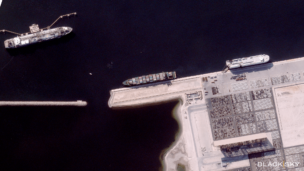Amazon unveiled three Project Kuiper terminal designs yesterday at Satellite 2023 in DC. Customers will use the antenna devices to connect users to Kuiper, Amazon’s planned LEO satellite internet network, starting in late 2024.
Terminal lineup
- Compact: The micro-terminal measures 7 inches square. The 1-lb device will be the most affordable option in the family. Despite its small stature, the device still packs a punch with an estimated 100 Mbps speed.
- Standard: Amazon is touting the medium-sized terminal as its standard model. The device is 11 inches square, weighs five lbs, and delivers speeds up to 400 Mbps.
- Jumbo: At 19 x 30 inches, the largest terminal can deliver a whopping 1 Gbps of internet speeds. Amazon designed the product with high-bandwidth government, enterprise, and telco applications in mind.
The Kuiper terminals incorporate proprietary antenna and baseband chip technology, and the e-commerce giant says it has already driven production costs down to $400-$500 a unit. How much of that upfront cost is passed onto the consumer has yet to be revealed.
What’s next
On May 4, Amazon will launch two Project Kuiper satellite prototypes aboard the maiden ULA Vulcan flight.
- By mid-2024, the tech giant plans to begin a rapid-fire launch cadence to get its 3,236 satellite constellation into orbit.
- To deploy this monster constellation, Amazon booked 92 (!) launches with ULA, Blue Origin, and Arianespace. SpaceX, unsurprisingly, is absent from the list of Kuiper workhorses.
The internet battle heats up: Starlink has a four-year, 4,000-bird, and 1M-subscriber head start on Project Kuiper. To close the gap, Amazon is hoping that offering an array of terminal options will expand the addressable market and differentiate its product offering.




